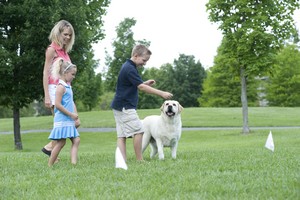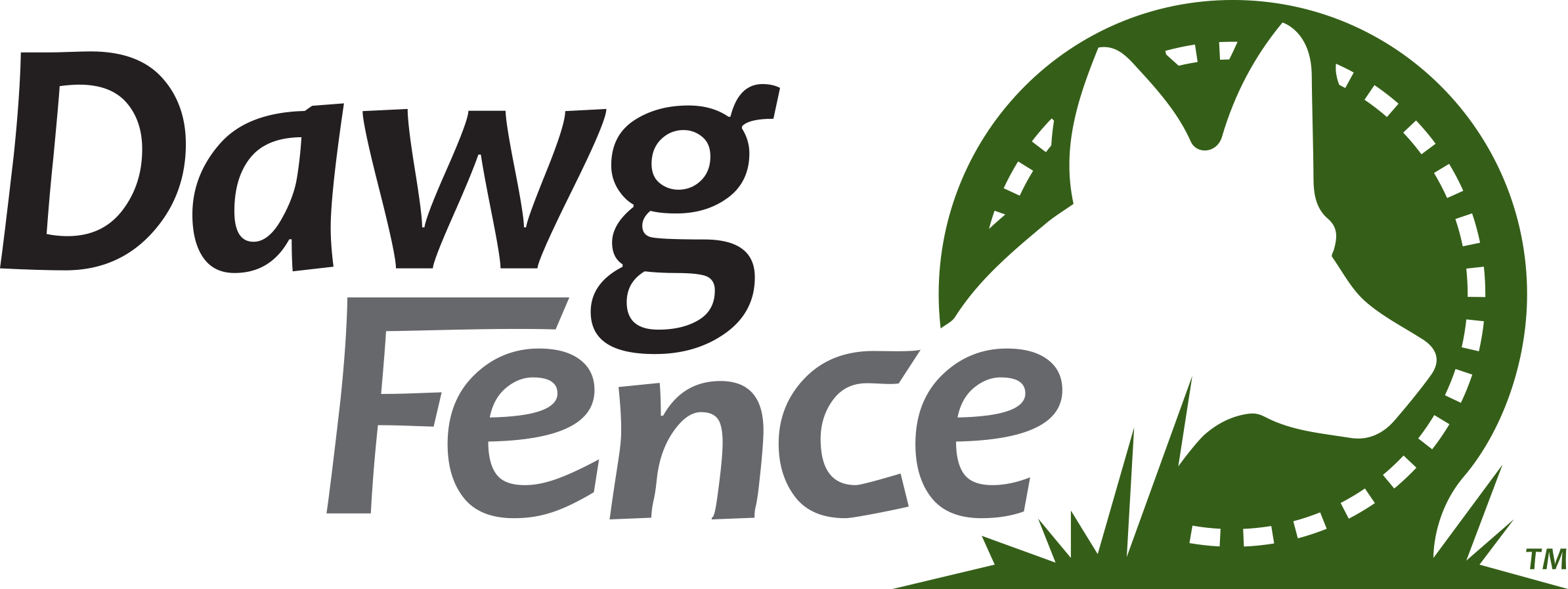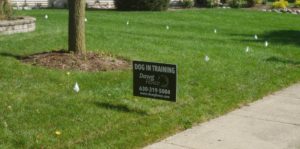Underground Dog Fence Training in Lombard, IL
 Your dog is as much an individual as you are. This is why our approach to underground dog fence training is radically different from the old-school way of “shock and awe”… which may provide fast results but is very stressful for your dog.
Your dog is as much an individual as you are. This is why our approach to underground dog fence training is radically different from the old-school way of “shock and awe”… which may provide fast results but is very stressful for your dog.
In contrast, our training is more careful and incremental. Our approach starts with very low shock levels, if any at all, to convey the limits of the yard with minimal stress for the dog. Moreover, treats and positive praise help to keep your pet happy, even while we teach the new boundaries. We don’t recommend ‘by the book’ underground dog fence training. That particular method is best left to the corporate-controlled systems. Pssst … Your dog can’t read the book.
Subtle variations in ear position, lip licking, and tail carriage are all indicators of stress. These and many other oddities are known to experienced trainers. In such cases, one should slow the training and focus more on play, rewards, and relaxing in the yard. The yard is JOY! We aim to provide the most caring and professional training experience for your pet possible.
Electronic Dog Fence Training Methods
Step-by-step or “corporate” training of dogs in electronic fencing would be ideal if all dogs were the same…but they aren’t. Here at Dawg Fence, we believe in using a tailored approach based on a dog’s unique personality traits. For example, a border collie may pick up what you’re teaching faster than, for example, a Blood Hound. In our experience, Huskies aren’t as tough as they look. And even American Staffordshire’s (Pit Bulls) aren’t the blood-lusting canines out to destroy the American way of life as portrayed by the media.
Each dog is special. What your dog needs is someone who understands this and adapts methods to fit the dog. Pet Stop® has every feature necessary to successfully train any creature out there in “doglandia”. That’s why I choose Pet Stop® for my business and no other.
Gentle Steps™
Gentle Steps™ is an amazing aid in adapting breeds or personalities to the boundaries. Allowing us the gentlest approach possible to training. The idea is to make the training as enjoyable as possible with the least amount of stress. We want the yard to be a great place to be! Other harsher methods not only keeping your dog in the yard and never wanting to leave the porch. Dawg Fence utilizes a positive, gentle approach.
It’s far more important to show your dog where it can go than where it can’t. And “porch sitting” is a failure. This usually occurs because of harsh “corporate” methods or limited systems. Granted, it can also be from poor training. A large part of the success of any system is the training methods employed … about 80%
All my “customers” start with Gentle Steps™ mode. This function allows us to introduce a level of static and when set to the lowest setting, will give a barely perceptible stimulus. That may be just enough to get the dog to understand our intent without causing fear of the training.
GentleSteps™ reduces stress and behavior problems,
helps pets learn faster and stay happier,
all while providing you with greater peace of mind.


